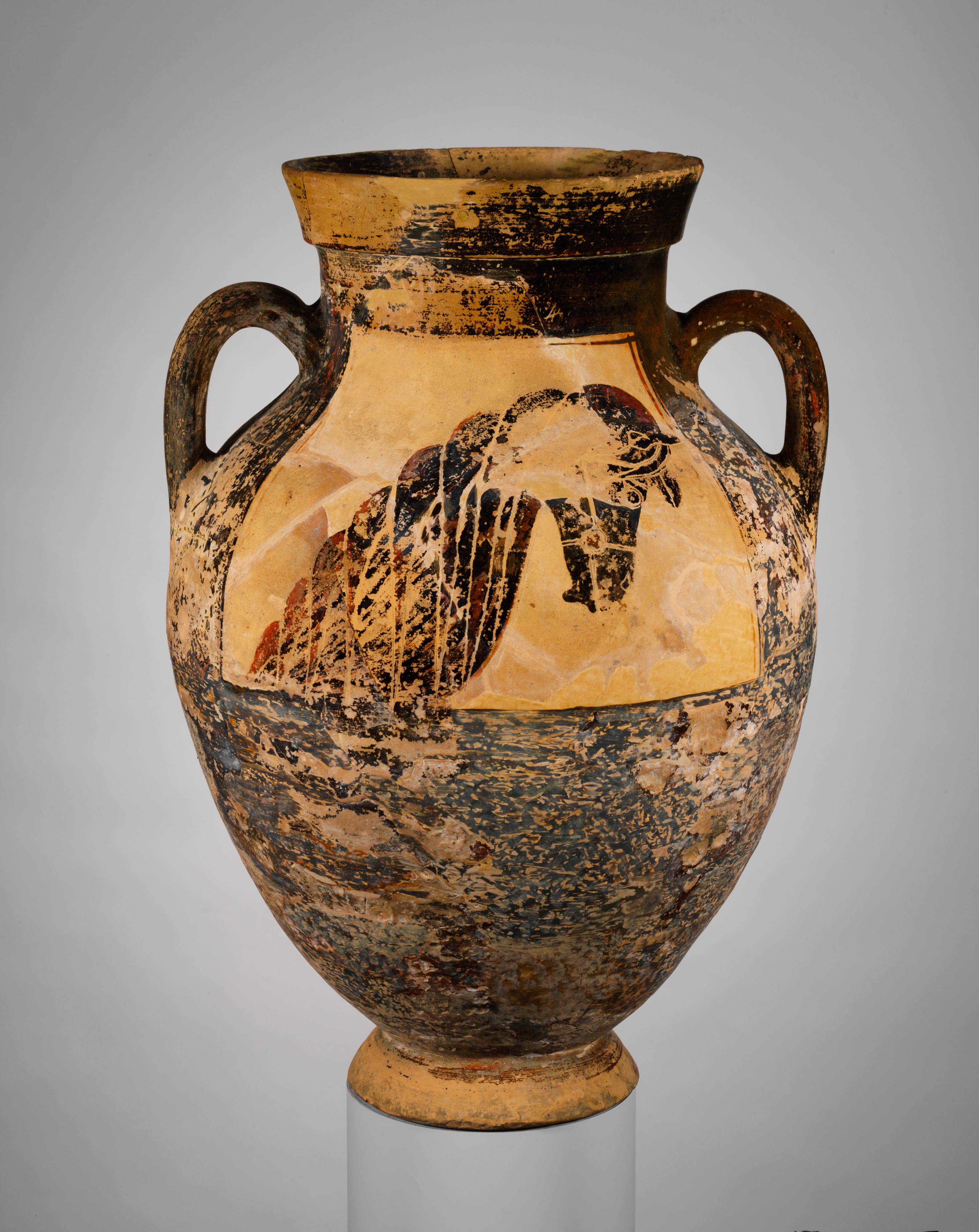Terracotta amphora (jar)
Attributed to The Horse-Head Amphorae
Obverse and reverse, head of a horse
The so-called Horse-Head amphorae were produced during the first half of the sixth century B.C., especially the early part. With few exceptions, the subject of the front and back is a horse's head and neck. While the precise significance is unclear, the reference is clearly to the horse as a symbol of status and wealth. The vases vary in size and were widely exported in antiquity, to Italy, the eastern Mediterranean, and Egypt. Their function would have varied as well. Because of its size and the signs of wear, this example may have stood on a grave.
Due to rights restrictions, this image cannot be enlarged, viewed at full screen, or downloaded.
This artwork is meant to be viewed from right to left. Scroll left to view more.



